Picture Of The Day 2 - January 10, 2019

Picture of the day 2 - January 10, 2019
Warm gas giant surrounded by a rainbow-colored ring system.
Space Engine System ID: RS 8550-1391-7-1315996-265 4 to visit the planet in space engine.
More Posts from Sharkspaceengine and Others





Pictures of the Day - December 25, 2018 (Merry Christmas)
Insight A System - Either Planet (Insight A-VIII)
Insight A-VIII is the eighth planet orbiting Insight A. It is an ice-giant with a mass 15.46 times that of Earth, and a diameter of 3.19 Earths. The planet has unusually pronounced cloud bands, and a wide-spaced ring system. It orbits it’s sun at an average distance of 4.01 AU, completing 1 orbit every 7.41 Years.
This planet has an active atmosphere with an average temperature of -213 F, and a day on the planet last 11 hours and 6 minus. 5 moons orbit the planet that are large enough to be rounded by their own gravity, including 4 larger than 2,000 kilometers across.
High Resolution Pictures
Insight A-VIII
Transiting Moon
Closeup
Asteroid Moon
View from outer-most large moon
Green Desert

Picture of the Day - November 2, 2018
Weird green desert-world rich in life, but lacking any bodies of surface liquids. Planet has a thin carbon dioxide atmosphere, average surface temperature of 73°F on the day side and is tidally locked to the sun.
Crowded Worlds

Picture of the Day - October 15, 2018
Alien moon and its parent gas giant, looking towards the sun. This system is located within one of the densely packed globular clusters orbiting Triangulum’s center.

Picture of the day - February 3, 2019 - (Very late post)
Stormy atmosphere of a gas giant.







O’Srius System - Post 3 (Stunning World)
Here we come across the smaller component of a double planetary system, being the 9 and 10th planets from the star. This planet is by far the most visually stunning world I have come across in the 6 months of playing space engine.
The world is roughly the same size as Earth, but only 0.58 times the mass. The surface is covered in liquid nitrogen oceans and nitrogen ice-caps. The planet has a surface temperature of 68 K or -337 °F. The atmosphere is composed of nitrogen and argon with a surface pressure of 0.095 atmospheres. The surface has a nitrogen cycle, much the same as Earth has a water cycle.
High Resolution Pics
Picture 1 - Crescent
Picture 2 - Gibbous
Picture 3 -
Picture 4 - River Channels
Picture 5 - Varied terrain
Picture 6 - Polar Cap
Picture 7 - Nitrogen Shoreline






These will be the last pics from the Large Magellanic Cloud Galaxy. I will have my next galaxy picked out soon.
High Resolution Pictures
Pale green titan-like world
Three suns
Cratered world with a thin atmosphere
White sun
Binary sunset
Two airless worlds





O’Sirus System - Post 1 (Hellish Moon)
We have gone deeper in the Triangulum Galaxy. We are now only 1,473 light years from the NGC 604 Nebula. Our next system is the O’Sirus System, a dim Orange Dwarf orbited by 12 planets, including 1 world that supports life.
The lone satellite orbiting the third planet. Roughly a third of Earth’s mass with a super-heated water vapor atmosphere. Atmospheric temperatures reach up to 1,000 K (1,340 °F), and glowing clouds of Titanium Dioxide hoover over the moon. The sun is only a K9V type star, but at only 0.11 AU, it covers an area of the sky 7.5 times larger than a Full Moon on Earth.
Space Engine System ID: RS 1229-171-8-11850488-229
High Resolution Pics
Picture 1 - Volcanic moon with glowing metallic clouds.
Picture 2 - Atmospheric Haze
Picture 3 - The Surface
Picture 4 - Lunar Sky
Picture 5 - Eclipse

Picture of the Day - January 28, 2019
Gas giant with purple cloud bands hangs in the sky of a large rocky moon.

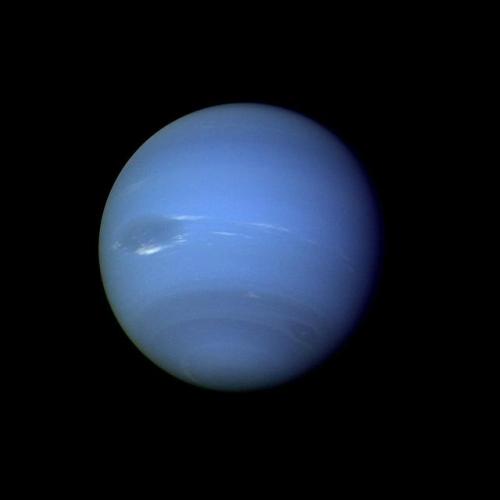
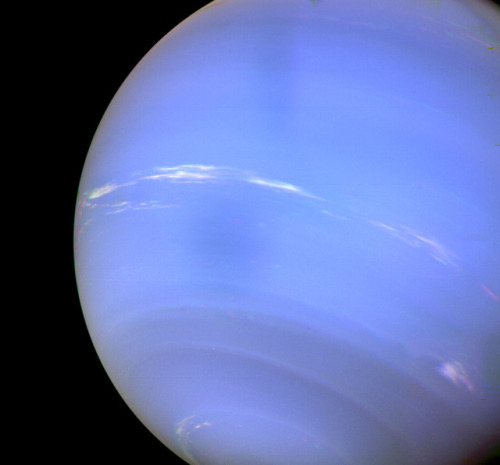
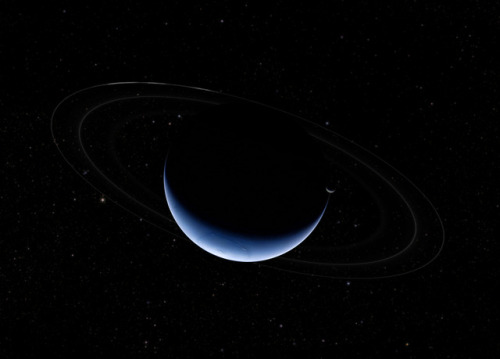
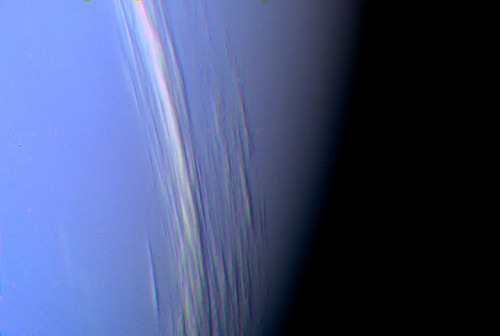
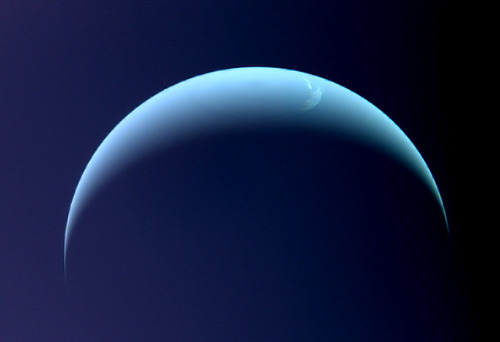
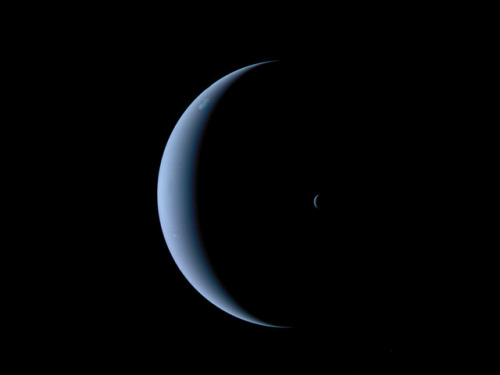
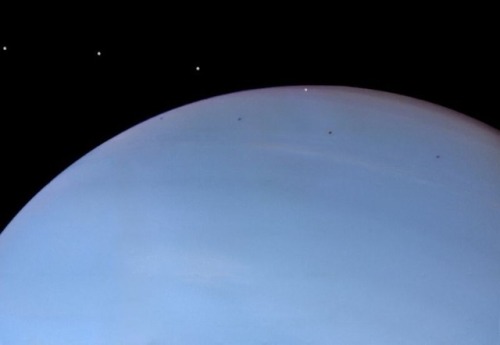
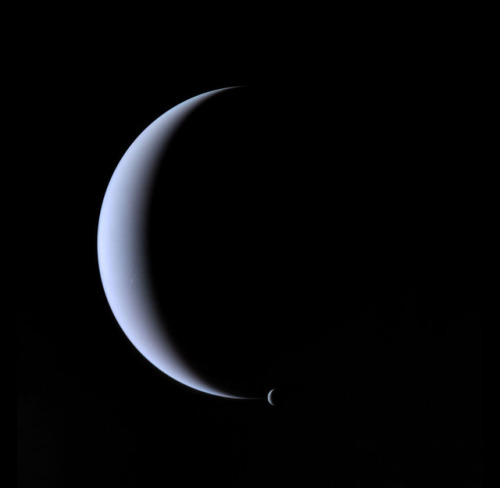
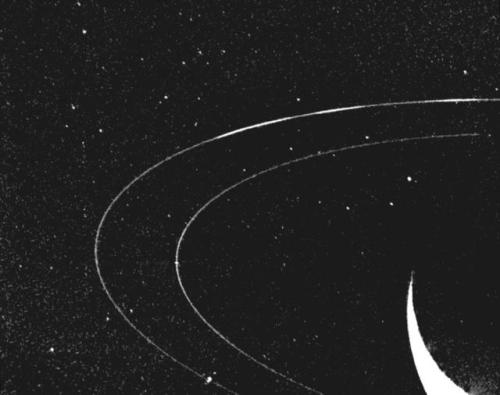
Neptune ♆
On this day in 1846 was discovered the planet Neptune.
The ice giant Neptune was the first planet located through mathematical predictions rather than through regular observations of the sky. (Galileo had recorded it as a fixed star during observations with his small telescope in 1612 and 1613.) When Uranus didn’t travel exactly as astronomers expected it to, a French mathematician, Urbain Joseph Le Verrier, proposed the position and mass of another as yet unknown planet that could cause the observed changes to Uranus’ orbit. After being ignored by French astronomers, Le Verrier sent his predictions to Johann Gottfried Galle at the Berlin Observatory, who found Neptune on his first night of searching in 1846. Seventeen days later, its largest moon, Triton, was also discovered.
Neptune is invisible to the naked eye because of its extreme distance from Earth. Interestingly, the highly eccentric orbit of the dwarf planet Pluto brings Pluto inside Neptune’s orbit for a 20-year period out of every 248 Earth years. Pluto can never crash into Neptune, though, because for every three laps Neptune takes around the Sun, Pluto makes two. This repeating pattern prevents close approaches of the two bodies.
Nearly 4.5 billion kilometers (2.8 billion miles) from the Sun, Neptune orbits the Sun once every 165 years.
Uranus’ blue-green color is also the result of atmospheric methane, but Neptune is a more vivid, brighter blue, so there must be an unknown component that causes the more intense color.
Despite its great distance and low energy input from the Sun, Neptune’s winds can be three times stronger than Jupiter’s and nine times stronger than Earth’s.
Winds on Neptune travel faster than the speed of sound.
In 1989, Voyager 2 tracked a large, oval-shaped, dark storm in Neptune’s southern hemisphere. This “Great Dark Spot” was large enough to contain the entire Earth.
Neptune has five known rings. Voyager 2’s observations confirmed that these unusual rings are not uniform but have four thick regions (clumps of dust) called arcs. The rings are thought to be relatively young and short-lived.
Neptune has 14 known moons, six of which were discovered by Voyager 2.
Triton, Neptune’s largest moon, orbits the planet in the opposite direction compared with the rest of the moons, suggesting that it may have been captured by Neptune in the distant past.
To know more about the planet Neptune click here and here.
Images credit: NASA/JPL- Caltech (some images processed by Kevin M. Gill)
Solar System 10 Things: Spitzer Space Telescope

Our Spitzer Space Telescope is celebrating 15 years since its launch on August 25, 2003. This remarkable spacecraft has made discoveries its designers never even imagined, including some of the seven Earth-size planets of TRAPPIST-1. Here are some key facts about Spitzer:
1. Spitzer is one of our Great Observatories.

Our Great Observatory Program aimed to explore the universe with four large space telescopes, each specialized in viewing the universe in different wavelengths of light. The other Great Observatories are our Hubble Space Telescope, Chandra X-Ray Observatory, and Compton Gamma-Ray Observatory. By combining data from different kinds of telescopes, scientists can paint a fuller picture of our universe.
2. Spitzer operates in infrared light.

Infrared wavelengths of light, which primarily come from heat radiation, are too long to be seen with human eyes, but are important for exploring space — especially when it comes to getting information about something extremely far away. From turbulent clouds where stars are born to small asteroids close to Earth’s orbit, a wide range of phenomena can be studied in infrared light. Objects too faint or distant for optical telescopes to detect, hidden by dense clouds of space dust, can often be seen with Spitzer. In this way, Spitzer acts as an extension of human vision to explore the universe, near and far.
What’s more, Spitzer doesn’t have to contend with Earth’s atmosphere, daily temperature variations or day-night cycles, unlike ground-based telescopes. With a mirror less than 1 meter in diameter, Spitzer in space is more sensitive than even a 10-meter-diameter telescope on Earth.
3. Spitzer was the first spacecraft to fly in an Earth-trailing orbit.

Rather than circling Earth, as Hubble does, Spitzer orbits the Sun on almost the same path as Earth. But Spitzer moves slower than Earth, so the spacecraft drifts farther away from our planet each year.
This “Earth-trailing orbit” has many advantages. Being farther from Earth than a satellite, it receives less heat from our planet and enjoys a naturally cooler environment. Spitzer also benefits from a wider view of the sky by orbiting the Sun. While its field of view changes throughout the year, at any given time it can see about one-third of the sky. Our Kepler space telescope, famous for finding thousands of exoplanets – planets outside our solar system – also settled in an Earth-trailing orbit six years after Spitzer.
4. Spitzer began in a “cold mission.”

Spitzer has far outlived its initial requirement of 2.5 years. The Spitzer team calls the first 5.5 years “the cold mission” because the spacecraft’s instruments were deliberately cooled down during that time. Liquid helium coolant kept Spitzer’s instruments just a few degrees above absolute zero (which is minus 459 degrees Fahrenheit, or minus 273 degrees Celsius) in this first part of the mission.
5. The “warm mission” was still pretty cold.

Spitzer entered what was called the “warm mission” when the 360 liters of liquid helium coolant that was chilling its instruments ran out in May 2009.
At the “warm” temperature of minus 405 Fahrenheit, two of Spitzer’s instruments – the Infrared Spectrograph (IRS) and Multiband Imaging Photometer (MIPS) – stopped working. But two of the four detector arrays in the Infrared Array Camera (IRAC) persisted. These “channels” of the camera have driven Spitzer’s explorations since then.
6. Spitzer wasn’t designed to study exoplanets, but made huge strides in this area.

Exoplanet science was in its infancy in 2003 when Spitzer launched, so the mission’s first scientists and engineers had no idea it could observe planets beyond our solar system. But the telescope’s accurate star-targeting system and the ability to control unwanted changes in temperature have made it a useful tool for studying exoplanets. During the Spitzer mission, engineers have learned how to control the spacecraft’s pointing more precisely to find and characterize exoplanets, too.
Using what’s called the “transit method,” Spitzer can stare at a star and detect periodic dips in brightness that happen when a planet crosses a star’s face. In one of its most remarkable achievements, Spitzer discovered three of the TRAPPIST-1 planets and confirmed that the system has seven Earth-sized planets orbiting an ultra-cool dwarf star. Spitzer data also helped scientists determine that all seven planets are rocky, and made these the best-understood exoplanets to date.
Spitzer can also use a technique called microlensing to find planets closer to the center of our galaxy. When a star passes in front of another star, the gravity of the first star can act as a lens, making the light from the more distant star appear brighter. Scientists are using microlensing to look for a blip in that brightening, which could mean that the foreground star has a planet orbiting it. Microlensing could not have been done early in the mission when Spitzer was closer to Earth, but now that the spacecraft is farther away, it has a better chance of measuring these events.
7. Spitzer is a window into the distant past.

The spacecraft has observed and helped discover some of the most distant objects in the universe, helping scientists understand where we came from. Originally, Spitzer’s camera designers had hoped the spacecraft would detect galaxies about 12 billion light-years away. In fact, Spitzer has surpassed that, and can see even farther back in time – almost to the beginning of the universe. In collaboration with Hubble, Spitzer helped characterize the galaxy GN-z11 about 13.4 billion light-years away, whose light has been traveling since 400 million years after the big bang. It is the farthest galaxy known.
8. Spitzer discovered Saturn’s largest ring.

Everyone knows Saturn has distinctive rings, but did you know its largest ring was only discovered in 2009, thanks to Spitzer? Because this outer ring doesn’t reflect much visible light, Earth-based telescopes would have a hard time seeing it. But Spitzer saw the infrared glow from the cool dust in the ring. It begins 3.7 million miles (6 million kilometers) from Saturn and extends about 7.4 million miles (12 million kilometers) beyond that.
9. The “Beyond Phase” pushes Spitzer to new limits.

In 2016, Spitzer entered its “Beyond phase,” with a name reflecting how the spacecraft operates beyond its original scope.
As Spitzer floats away from Earth, its increasing distance presents communication challenges. Engineers must point Spitzer’s antenna at higher angles toward the Sun in order to talk to our planet, which exposes the spacecraft to more heat. At the same time, the spacecraft’s solar panels receive less sunlight because they point away from the Sun, putting more stress on the battery.
The team decided to override some autonomous safety systems so Spitzer could continue to operate in this riskier mode. But so far, the Beyond phase is going smoothly.
10. Spitzer paves the way for future infrared telescopes.

Spitzer has identified areas of further study for our upcoming James Webb Space Telescope, planned to launch in 2021. Webb will also explore the universe in infrared light, picking up where Spitzer eventually will leave off. With its enhanced ability to probe planetary atmospheres, Webb may reveal striking new details about exoplanets that Spitzer found. Distant galaxies unveiled by Spitzer together with other telescopes will also be observed in further detail by Webb. The space telescope we are planning after that, WFIRST, will also investigate long-standing mysteries by looking at infrared light. Scientists planning studies with future infrared telescopes will naturally build upon the pioneering legacy of Spitzer.
Read the web version of this week’s “Solar System: 10 Things to Know” article HERE.
Make sure to follow us on Tumblr for your regular dose of space: http://nasa.tumblr.com.
-
 scorgsa reblogged this · 5 years ago
scorgsa reblogged this · 5 years ago -
 sweet-verses reblogged this · 6 years ago
sweet-verses reblogged this · 6 years ago -
 sweet-verses liked this · 6 years ago
sweet-verses liked this · 6 years ago -
 vegetalovescats liked this · 6 years ago
vegetalovescats liked this · 6 years ago -
 rubynye reblogged this · 6 years ago
rubynye reblogged this · 6 years ago -
 ayeeshanaenae liked this · 6 years ago
ayeeshanaenae liked this · 6 years ago -
 evenglitterfadestodust liked this · 6 years ago
evenglitterfadestodust liked this · 6 years ago -
 piqselphoto liked this · 6 years ago
piqselphoto liked this · 6 years ago -
 nalila9632 liked this · 6 years ago
nalila9632 liked this · 6 years ago -
 hurricanebreeze reblogged this · 6 years ago
hurricanebreeze reblogged this · 6 years ago -
 heroingoldveinz liked this · 6 years ago
heroingoldveinz liked this · 6 years ago -
 harmonicgamingangel22blog liked this · 6 years ago
harmonicgamingangel22blog liked this · 6 years ago -
 social--joe reblogged this · 6 years ago
social--joe reblogged this · 6 years ago -
 wildberrysmoothie liked this · 6 years ago
wildberrysmoothie liked this · 6 years ago -
 riboher71-84 liked this · 6 years ago
riboher71-84 liked this · 6 years ago -
 rubynye liked this · 6 years ago
rubynye liked this · 6 years ago -
 saylorbyeori reblogged this · 6 years ago
saylorbyeori reblogged this · 6 years ago -
 saylorbyeori liked this · 6 years ago
saylorbyeori liked this · 6 years ago -
 createyour0wnworld liked this · 6 years ago
createyour0wnworld liked this · 6 years ago -
 fuckyeahcelestialthings reblogged this · 6 years ago
fuckyeahcelestialthings reblogged this · 6 years ago -
 sharkspaceengine reblogged this · 6 years ago
sharkspaceengine reblogged this · 6 years ago
My Space Engine Adventures, also any space related topic or news. www.spaceengine.org to download space engine. The game is free by the way. Please feel free to ask me anything, provide suggestions on systems to visit or post any space related topic.Check out my other blog https://bunsandsharks.tumblr.com for rabbit and shark blog.
294 posts